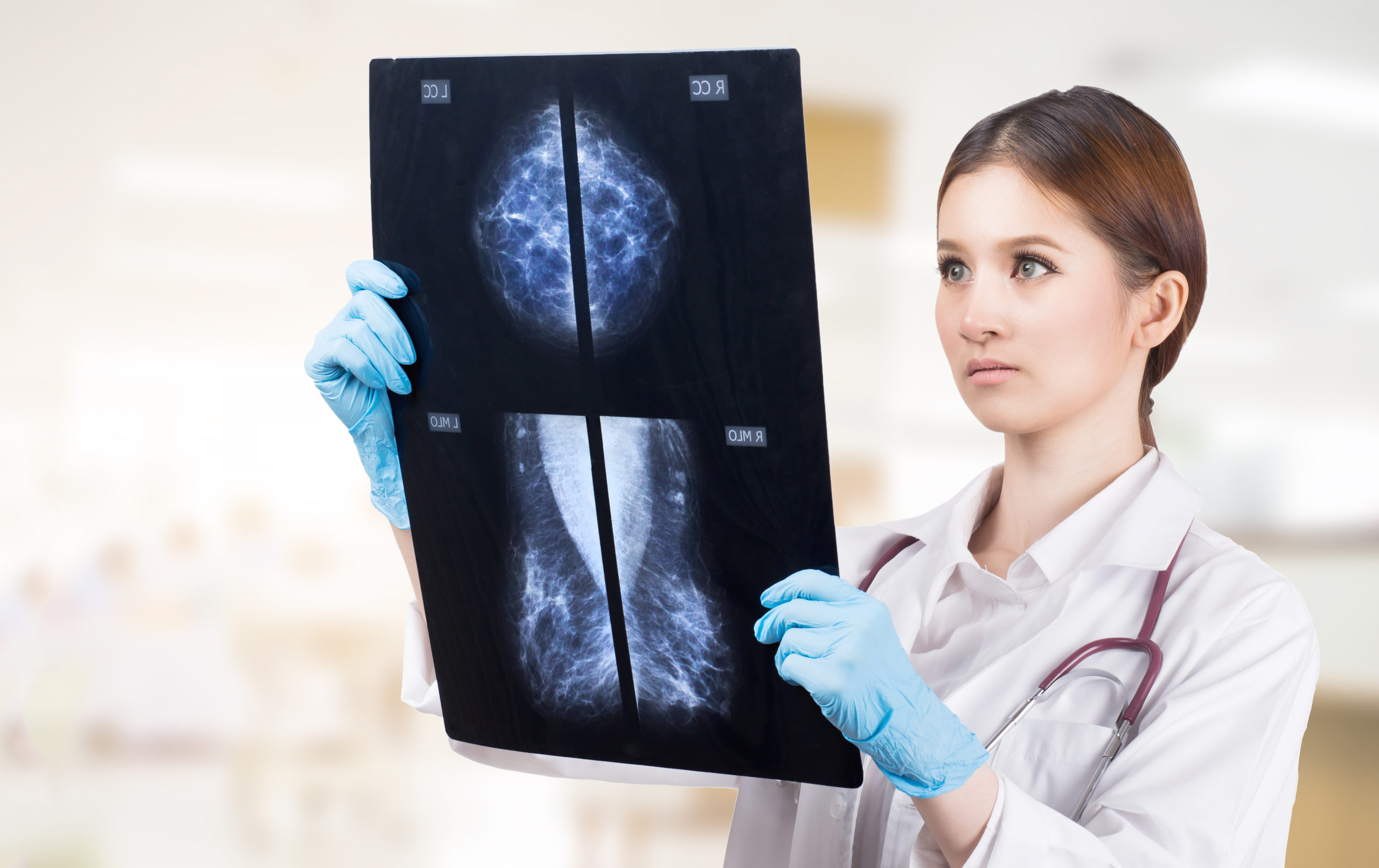What is the Difference between a Screening Mammogram and a Diagnostic Mammogram?
Blog
Regular screening mammograms and clinical breast exams are the most sensitive ways to screen for breast cancer. Early detection of breast cancer with screening mammography means that the treatment can be started earlier, possibly before cancer spreads.
A screening mammogram is the first step to check for breast cancer. Screening mammograms are performed for women who have no signs or symptoms of breast cancer and are considered average risk for breast cancer. A diagnostic mammogram is the next stage of the process. The same machines are used for both types of mammograms.
A screening mammogram consists of 4 pictures, 2 pictures of each breast. The medial lateral oblique (“MLO”) view is a side view of the breast and the cranial caudal (“CC”) view is a view of the breast taken directly from the top looking down. The radiologist is looking for dense and new axillary lymph nodes, asymmetry (some breast tissue is not the same as the other side) and increased calcifications.
When the radiologist sees something abnormal on the screening mammogram, they may want more pictures and convert a screening mammogram into a diagnostic mammogram. A diagnostic mammogram is performed to take specific extra views of suspicious abnormalities, e.g., dense axillary lymph nodes, in the breast tissue.
A diagnostic mammogram can be used to evaluate changes found during a screening mammogram. A diagnostic mammogram involves taking more detailed x-ray pictures of the breast from different angles to check the suspicious area more closely.
A diagnostic mammogram is only done if the doctor thinks they may have spotted an abnormality in the breast tissue. The technologist may magnify a suspicious area to produce a detailed picture that can help the doctor make an accurate diagnosis.
Diagnostic mammograms are also used for women who have symptoms, such as a lump, or whose breasts have changed in size or shape. Since 2010, the Affordable Care Act has required all new health insurance plans to cover screening mammograms in full, with no out-of-pocket charges for patients.
A diagnostic mammogram is often followed by a targeted breast ultrasound to further evaluate the suspicious area. A biopsy is the only way to find out for sure if the patient has cancer. During a biopsy, a small amount of tissue is removed and studied under a microscope to see if there are cancer cells.
The American College of Radiology (ACR) established a uniform way for radiologists to describe mammogram findings. The system, called BI-RADS (Breast Imaging Reporting and Data System) includes 7 standardized categories. Each BI-RADS category has a follow up plan associated with it to help radiologists and other physicians determine the plan of treatment.
BI-RADS 1: Negative. Routine follow up in 1 year.
BI-RADS 2: Benign (non-cancerous) findings. Continue regular screening mammogram.
BI-RADS 3: Probably benign, less than 5% chance of cancer. Receive a 6 month follow up mammogram.
BI-RADS 4: Suspicious abnormality. May require biopsy.
BI-RADS 5: Highly suggestive of malignancy. Requires biopsy.
BI-RADS 6: Known biopsy, proven malignancy.
BI-RADS 0: Incomplete. Needs additional evaluation.
